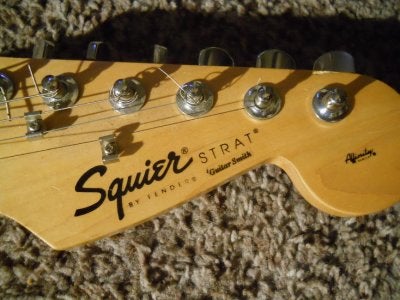

In 1986 it was composed of Players models, reminiscent of the Stratocasters of famous musicians, as the ST72-65 with a rosewood scalloped fingerboard, which is said to have been released at the request of Yngwie Malmsteen, ExTrad models (see next chapter), a luxury line which represented the best of the made in Japan luthierie, and Limited Edition guitars, such as the 12 strings STXII or the Paisley Stratocaster. The Collectors Series has been developed separately from the regular lineup since around 1985. The name "Zinger series" soon disappeared and was absorbed by the Fender Current Series. In 1984, the entry level Zinger Series was released with the aim of offering guitars at a low price, as the ST57-55, ST62-55, and the ST72-55. It is important not to confuse these Currents Series Stratocasters with the CST models of the 1983 Squier branded Current Series. The typical Current model had a large headstock with CBS Logo, bullet truss rod and 3-bolt neck plate with micro tilt adjustment.

In the spring of 1987, the '70s style reissues were all brought together in the Current Series. Some featured US pickups and electronics, selected woods and lacquer finishes, others were cheaper and featured Japanese electronics, ceramic pickups, and polyester finishes. The Vintage Series first included reissues of the Stratocasters of 1954, 1957, 1962, 1972. Many domestic Stratocasters have arrived today in Europe and USA, often with very different specs, so that it is not easy to distinguish them from those that were initially intended for export. In 1985 the MIJ domestic Stratocasters were divided into Fender Vintage Series, Current Series, Collectors Series and Boxer Series.

The domestic ST, SST and CST Stratocasters continued to be produced - and obviously intended only for the Japanese market - with serial numbers different from the JV one.

It was evident, however, that Fender began to export only the lower quality models after the JV’s and the SQ’s, so as not to run the risk of a self-competition, leaving the best guitars in Japan. The new export guitars, fundamental to supporting Fender after the closure of the Fullerton factory, were divided into Standard and Contemporary - both Fender and Squier - and Reissue, that would be called Collectables (or Collectibles) starting in 1992. The JV and SQ era ended in 1984 and, after them, Fender Japan continued to export Stratocaster using other serial numbers: at the beginning the "E series", to which first the "A", "B" and "C" were superimposed and, subsequently, the others. In order to avoid ruining the market for Fender, but to hinder oriental copies, between 19 the only Japanese export reissues were Squier.


 0 kommentar(er)
0 kommentar(er)
